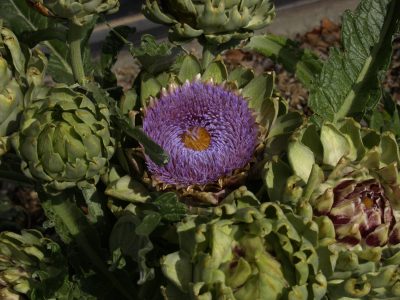How do I get rid of weeds in walkway paths?
This is a bit of a pet peeve of mine: weeds growing in cracks in the sidewalk. How do you control them?
Weeds growing in hardscapes can be very difficult to deal with once they’ve gotten out of control. If they have, you should start by pulling out as much of the plant as you can. In very narrow spots, a dandelion weeder or a long-handled screwdriver makes it much easier.
Unfortunately, in most situations, you’ll be left with some pretty pernicious roots, and you’ll need to use an herbicide to finish off the job.
You may want to use vinegar instead of a chemical product, and vinegar does work, but only if used appropriately. First, kitchen vinegar does not quite do the job. You’ll need the concentrated, laboratory-grade vinegar (10% or 20%) which you can find in most local nurseries.
But what most people don’t realize about vinegar is that it only kills the top growth, not the root. So after you’ve pulled the weed, you’ll need to wait until it regrows before you spray it with vinegar. If the weed has a large root system it may take several treatments, but just keep at it. Eventually the plant will use up all of the stored carbohydrates in its roots and won’t grow back. You’ll still need to dig out as much of the dead plant material from the crack as you can, since anything left behind will serve as a nice little base for a new weed to grow.
Which leads me back to my peeve. This whole situation can be avoided by simply making sure that dirt and organic debris, normally lawn clippings, don’t build up in those cracks. After mowing, make sure to blow or sweep all of the stray lawn clippings out of those cracks. Weeds don’t break through solid concrete from the ground below; they sprout from seeds that have landed on the miniscule amount of organic matter that has blown into that crack.
Obviously, if the hardscape is actually broken, plants can creep in from the exposed ground below, but I’m talking about naturally depressed areas, where blowing dirt lands and is not easily gotten out.
And this seems like the perfect opportunity to remind everyone: when blowing your lawn clippings off the driveway and sidewalk, don’t blow them out into the street, blow them back onto your lawn. Not only will nutrients be added back to the soil as the clippings break down, you’ll also keep organic matter out of our storm water system, where it does not belong.

 Ally Stresing
Ally Stresing Daphne Richards
Daphne Richards
 John Dromgoole
John Dromgoole